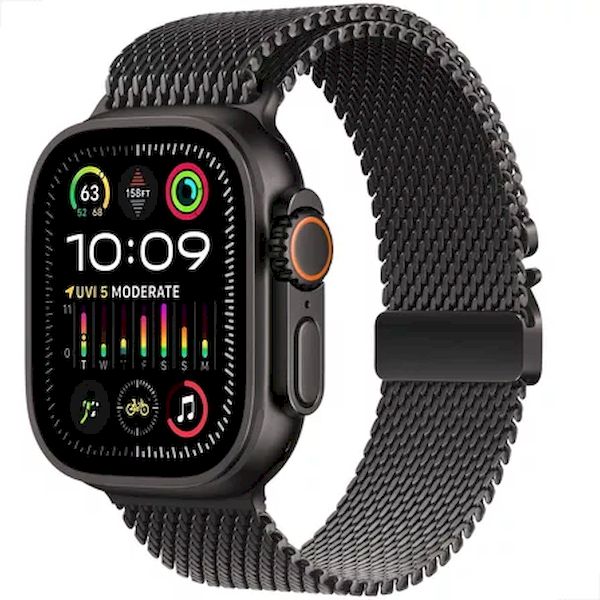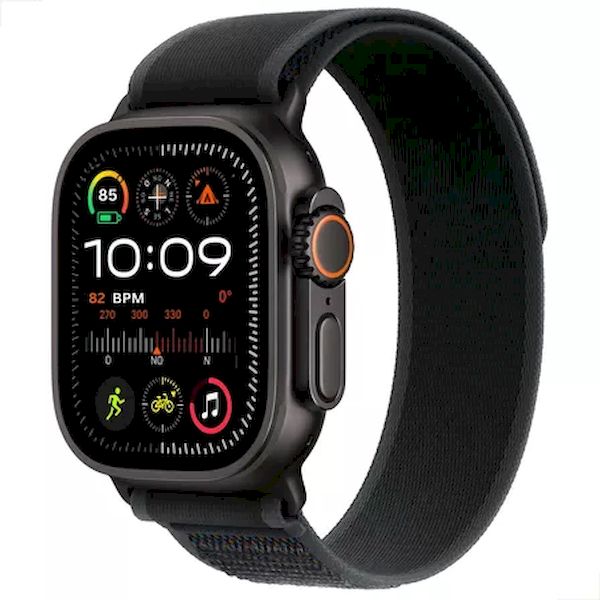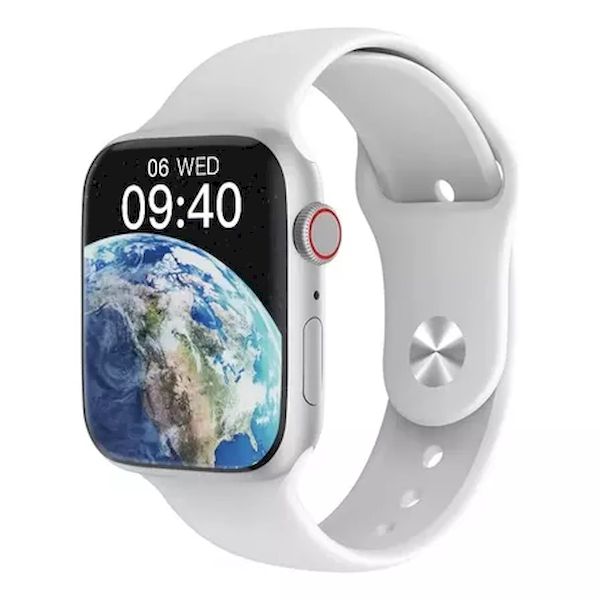The Apple Watch Ultra 2 marks a groundbreaking advancement in Apple’s lineup of smartwatches, captivating tech enthusiasts and casual users alike. One of the standout features that potential buyers often inquire about is the Apple Watch Ultra 2 battery life. With advanced technology and user-focused features, the Ultra 2 seeks to deliver exceptional performance and dependability. In this article, we will dive deep into the intricacies of the Apple Watch Ultra 2 battery life, exploring its specifications, real-world experiences, and practical tips to extend its usability.

Understanding the Apple Watch Ultra 2 Battery Life Specifications
When assessing any smartwatch, battery life is a key determining factor for performance and usability. The Apple Watch Ultra 2 has made significant strides in this area compared to its predecessors. Here are some critical battery specifications:
Battery Capacity and Lifespan
The Apple Watch Ultra 2 boasts a larger battery capacity than its predecessor, featuring a lithium-ion battery that can last longer during daily activities. The estimated specific duration includes:
- Standard Usage: Up to 36 hours
- Power Saving Features: Using low-power modes can extend the battery life up to 60 hours.
These figures offer a glimpse into how the Ultra 2 can support not just casual wearers but also fitness enthusiasts and multitaskers whose lifestyles demand more.
Charging Time and Technology
Another important aspect of the Apple Watch Ultra 2 battery life is its charging capabilities. Using Apple’s fast charging technology, users can reach a full charge in approximately 2 hours. Knowing that you can quickly recharge your device during short breaks or while you are getting ready for the day makes the Ultra 2 a practical choice for those constantly on the go.
User Experiences with the Apple Watch Ultra 2 Battery Life
Understanding technical specifications is beneficial, but real user experiences often paint a clearer picture. Feedback from Apple Watch Ultra 2 users reveals varying insights into its battery performance, from everyday users to fitness fanatics.
Everyday Use
For users whose primary watch functions include checking notifications, health tracking, and utilizing standard apps, the Ultra 2’s battery life is commendable. Most report that they can navigate through their daily routines without the need for recharging until the end of the day, even with consistent activity tracking.
Fitness Tracking
Fitness enthusiasts using the watch for extended workouts have shared their experiences as well. The Apple Watch Ultra 2 is designed with this demographic in mind. Users typically enjoy an uninterrupted workout with GPS functionality tracking their routes and metrics without significant battery drain. It’s vital to note that when utilizing heavy GPS or workout metrics, the battery does drain faster than it would in standard mode. However, routine recharges between workouts generally suffice.
Notifications and Apps
The demand for instant connectivity can often affect battery life. Users engaging in practices such as replying to messages, utilizing music controls, and tracking heart rates have identified that heavy app usage does contribute to faster battery depletion. Nevertheless, for those who employ battery-saving strategies and limit superfluous notifications, the Ultra 2 performs admirably throughout the day.

Optimizing Your Apple Watch Ultra 2 Battery Life
If you are keen on running your Apple Watch Ultra 2 efficiently and prolonging its battery life, consider implementing the following strategies:
Enable Low Power Mode
In situations where battery life becomes a pressing concern, low-power mode can be a lifesaver. This feature reduces background activity and may limit some functionalities. However, it can significantly extend battery life during those critical moments when a charge is not available.
Adjust Brightness and Notifications
Screen brightness is a significant contributor to battery drain. Lowering the brightness or enabling Auto-Brightness can enhance battery preservation while retaining usability. Furthermore, customizing notification settings by reducing unnecessary alerts will also help.
Manage Background Apps
Regularly monitoring which apps run in the background can have a pivotal role in diminishing battery consumption. Users can visit the Settings section to manage which apps are allowed to refresh and function when not in the foreground.
Utilize Airplane Mode
If you find yourself in an area with poor connectivity or while traveling, enabling airplane mode can preserve battery life significantly. This reduces the constant searching for signals, which commonly drains battery health.
Comparing the Apple Watch Ultra 2 Battery Life to Its Predecessors
The Apple Watch Ultra 2 presents performance enhancements over previous iterations in the lineup. Understanding how it stacks against its predecessors provides further context.
Apple Watch Series 7 vs. Apple Watch Ultra 2
The Series 7 offers a respectable battery life but maxes out at about 18 hours of regular usage. In contrast, the Ultra 2 extends this performance drastically. Users transitioning from the Series 7 will find the Ultra 2’s capabilities not only improved but gratifying, especially for users with active lifestyles.
Apple Watch Ultra vs. Apple Watch Ultra 2
When comparing the original Apple Watch Ultra to its successor, users encountered minor improvements. The Ultra 2 reflects effective optimization in software, which helps improve battery efficiency under high GPS usage and notifications compared to the first Ultra edition.
What to Expect for Future Apple Watch Models
As technology advances, expectations for newer models of Apple Watch are always on the rise. Based on trends in battery technology and user feedback, it’s likely that future models will focus on two main aspects:
Enhanced Battery Chemistry
The potential for improved battery technology exists, likely involving better chemistry or larger physical batteries that bring efficiency into focus. Users may expect longer battery life to handle the increased demands of health monitoring features and advanced functionalities.
Software Optimization
As software continues to play a critical role in overall device performance, future updates are expected to optimize the interaction between applications and battery life. Enhancements in power management systems will likely further extend operational time without requiring physical changes to battery attributes.
Future Innovations: What Can We Expect?
With the rapidly evolving landscape of wearable technology, the potential for future advancements in the Apple Watch Ultra 2 battery life and features remains exciting. Here are some innovations that users may look forward to:
Solar Charging Capabilities
While it may be ambitious, the integration of solar charging technology is a potential game-changer in extending battery life. As solar technology becomes more advanced, the incorporation of solar panels into the watch’s design could enable users to capitalize on renewable energy, allowing for off-grid charging opportunities.
Health Technological Advancements
As health tracking becomes increasingly critical, future models may incorporate additional features or sensors that demand extra power. Innovations that enhance battery life while accommodating these new functions will be crucial for users who wish to maximize their smartwatches’ potential.
Deeper Integration with AI
As artificial intelligence capabilities advance, we may see more intelligent battery management systems that optimize usage based on the user’s patterns. Such enhancements could ensure that the watch learns when and how to conserve power, adapting functions based on individual user behavior.
Troubleshooting Common Battery Life Issues
While the Apple Watch Ultra 2 battery life is impressive, users may occasionally encounter issues that cause faster battery drain. Understanding how to troubleshoot these problems can enhance the user experience.
Identifying Battery-Hungry Apps
Certain apps are known to consume more power than others, particularly those utilizing GPS and continuous data updates. By visiting the battery settings on the watch, users can identify which apps are contributing most to battery drainage. Users can close or limit the usage of these apps when they are not necessary to preserve battery life.
Performing Software Updates
Keeping the Apple Watch’s software updated is critical for improving its performance and battery efficiency. Regularly checking for software updates ensures that users benefit from the latest optimizations and features, which may also include enhancements to battery management.
Resetting or Restarting the Watch
Sometimes, a simple restart can solve lingering issues related to battery life. If users notice a sudden drop in battery performance, performing a reset can recalibrate the device and may help restore average consumption levels.

Future Innovations: What Can We Expect?
With the rapidly evolving landscape of wearable technology, the potential for future advancements in the Apple Watch Ultra 2 battery life and features remains exciting. Here are some innovations that users may look forward to:
Solar Charging Capabilities
While it may be ambitious, the integration of solar charging technology is a potential game-changer in extending battery life. As solar technology becomes more advanced, the incorporation of solar panels into the watch’s design could enable users to capitalize on renewable energy, allowing for off-grid charging opportunities.
Health Technological Advancements
As health tracking becomes increasingly critical, future models may incorporate additional features or sensors that demand extra power. Innovations that enhance battery life while accommodating these new functions will be crucial for users who wish to maximize their smartwatches’ potential.
Deeper Integration with AI
As artificial intelligence capabilities advance, we may see more intelligent battery management systems that optimize usage based on the user’s patterns. Such enhancements could ensure that the watch learns when and how to conserve power, adapting functions based on individual user behavior.
